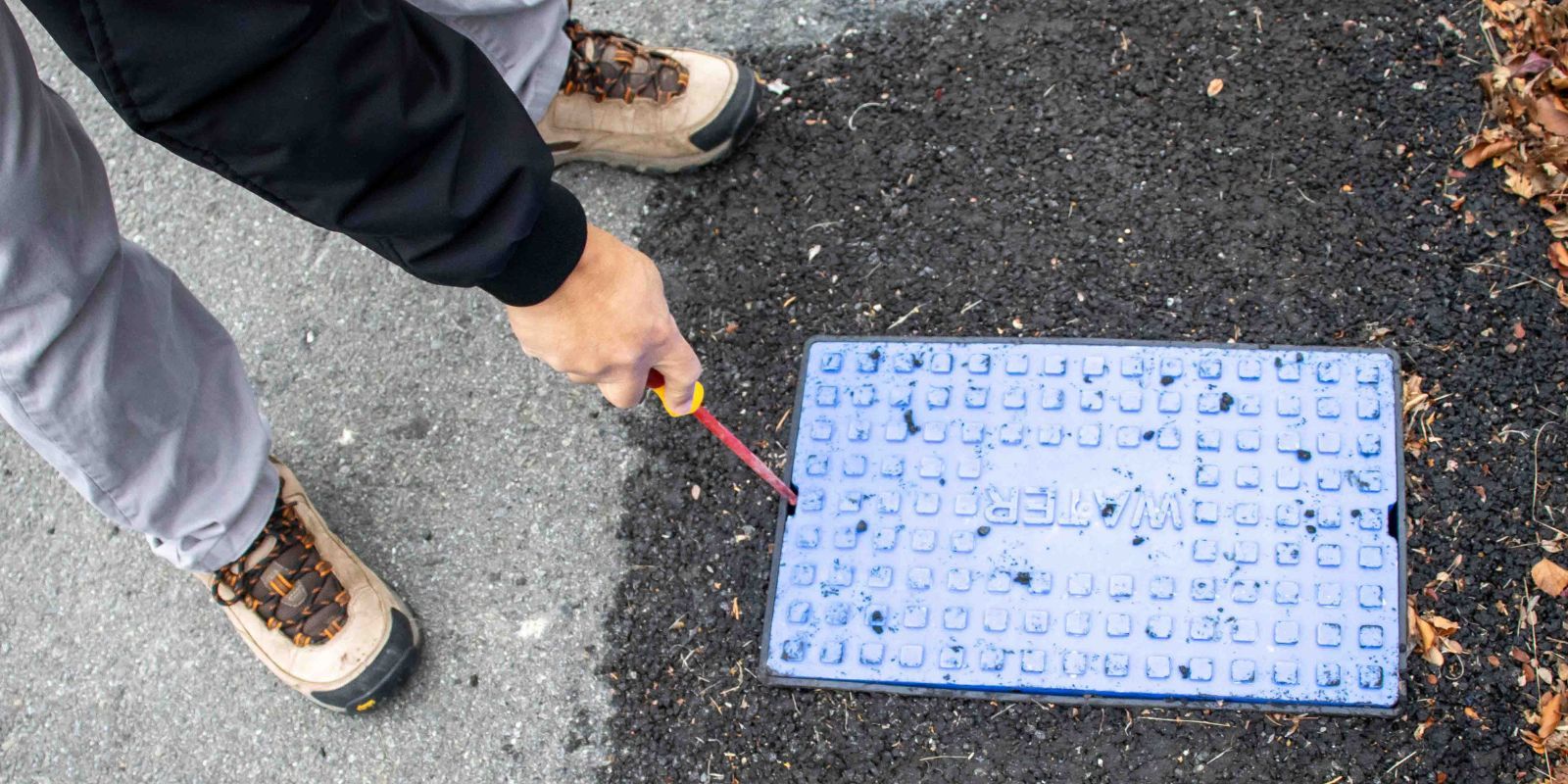Every household pays a water rate. This covers basic consumption and the cost of supplying and maintaining the infrastructure.
The amount of water allowed under the water rate is 700m3 per year.
- This equals: 700,000 litres
- This is an average of 1917.8 litres per day (700,000 / 365 days)
- The average person in NZ uses 227 litres per day (mainly for toilets, hygiene - bathing etc - and laundry)
- 8 average people can live in a house and still not use the whole of the annual amount of water covered by their rates.
Some people like to keep an eye on the amount of water their househould is consuming. This can be done by reading the numbers on the top of the water meter.
You can find your water meter under a blue cover which is usually off the road near your property boundary.
To open the blue cover take a screwdriver or similar robust metal lever. Insert it into the notch at one end and lever the lid up.
Inside you will find your water meter and your toby, the tap where you can turn off your water supply if you are going away for an extended period, or in the event of an emergency.
Make a note of the number showing on your meter. Next time you read the meter you will be able to use this number and the next one to calculate the amount of water you have used. If it shows that you have suddenly used a lot of water, you may have a water leak somewhere that needs repair.
In Mackenzie we have two styles of meter installed:

Reading the Manas meter
The numbers show how many cubic meters you have used. The numbers on black are whole numbers, the numbers on red are decimals. For example this meter is showing 391.039m3.
Reading the Shape meter
Lift the blue cover. Press the single round button on the bottom right until the screen displays m3. This meter shows 132.7288m3 have been measured.

Cleaning your meter
It is normal for dirt, gravel, leaves, cobwebs etc to collect inside your water cover. Using a small nylon brush, a cloth or similar you can clean it up without damaging the equipment. Please do not use cleaning chemicals.

